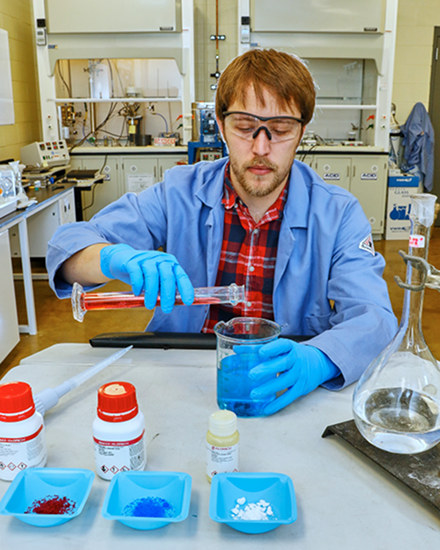
Researcher Andrew Binder and colleagues discovered that by mixing three components they could create an innovative catalyst that performs well at low temperatures without the use of precious metals. (Photo courtesy ORNL)
A catalyst being developed by researchers at the U.S. Department of Energy’s Oak Ridge National Laboratory could overcome one of the key obstacles still preventing automobile engines from running more cleanly and efficiently.
The mixed oxide catalyst could solve the longstanding problem of inhibition, in which nitrogen oxides, carbon monoxide, and hydrocarbons effectively clog the catalyst designed to cleanse a vehicle’s exhaust stream. This happens as these three pollutants compete for active surface sites on the catalyst. Now, however, ORNL’s low-cost catalyst composed of copper oxide, cobalt oxide, and cerium oxide shows considerable promise when tested in simulated exhaust streams.
“Our catalyst potentially fixes the inhibition problem without precious metals and could help more efficient engines meet upcoming stricter emission regulations,” said Todd Toops of ORNL’s Energy and Transportation Sciences Division. Toops noted that the unique formulation builds on previous work by colleagues Andrew Binder and Sheng Dai, who varied the composition of the three catalyst components in search of improved oxidation activity under simple conditions. [Read more…]